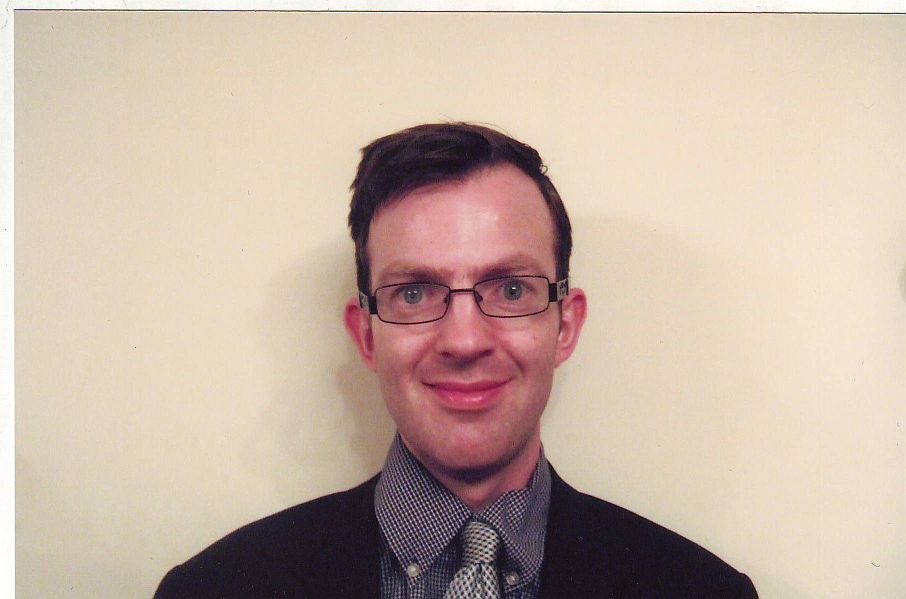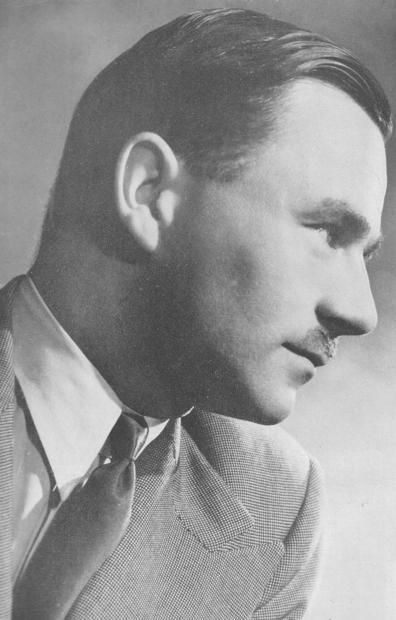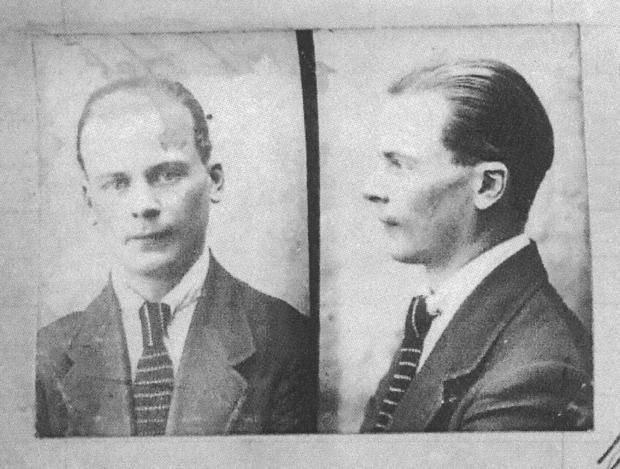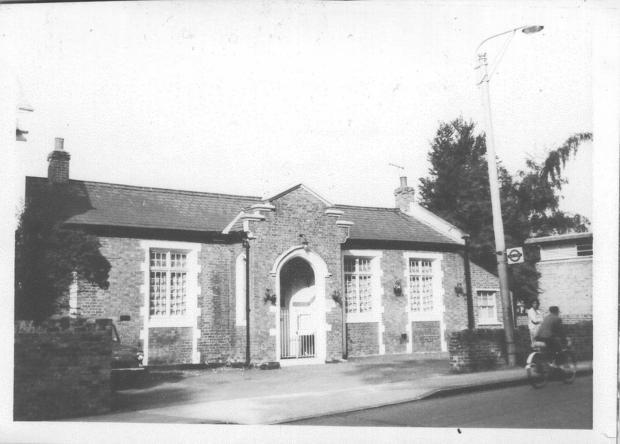
Jonathan Oates.

Jonathan Oates.
Jonathan Oates is both an archivist and an accredited historian. He talks here about his book on serial killer Christie and more.

Evans was photographed arriving at Paddington Station escorted by two police officers. This photograph is deceptive, because he was far from the frightened little man it makes him out to be.
Jonathan Oates is no stranger to these pages. His book John Christie Of Rillington Place...was published in hardback last year and in paperback early this year.
Alexander Baron: Thank you for taking the time to speak to us. What have you been doing since November last year?
Jonathan Oates: Well, I’ve been working on various projects – apart from having my day job, moving house, taking up a new hobby and doing various family duties, etc. These include the final research and writing up of a book about John George Haigh (to be published in 2014), ditto for a concise history of Ealing and having a more lightweight book – Ealing Through Time – published and working on transcriptions of the Duke of Cumberland’s correspondence for 1745-1748 to be published in 2015 (as is the latter Ealing book).
AB: Before we go any further, I’m not going to damn you with faint praise. I’ve read some fine non-fiction crime books in my 57 years. I’ve also read books that have more footnotes, but the information you’ve dug out here is positively staggering, even for an archivist. I suspect you consulted the Hull electoral registers at the British Library, but where did you travel and who funded your research? How did you go about it?
JO: The main archival sources are at the National Archives at Kew, where they hold the papers of the Home Office, Metropolitan Police, Prison Commission, Cabinet Office and Department for Public Prosecutions. But there are important gaol registers and records of lesser courts at the London Metropolitan Archives; useful for Christie and those of his victims who had police records. The British Library Newspaper Library was crucial for both national and local newspapers which give information about the case and for the lives of the key personalities before they were involved in murder. I knew about these sources through my previous research, both for my doctoral thesis and for writing a number of books about crime since 2005. As all these places are within London, travel was easy and not too expensive – authors pay for it and then put it down as expenses to offset against tax.
AB: Like me you hold some rather unpopular beliefs about this case, in particular you are not taken in by the sad tale of poor, dumb, illiterate, manipulated Tim Evans. We will never know for certain but can I ask you what you think actually happened to Beryl and Geraldine?

Serial killer John Reginald Halliday Christie who was hanged July 15, 1953.
JO: Evans’ innocence has been asserted by some authors and of course the 1971 film 10 Rillington Place, but by no means all authors and commentators have thought so. Basically the evidence points to Evans as being a feckless husband, prone to bouts of bad temper and violence against his wife, incompetent with money, with a minor criminal record and a penchant for drink and adultery. He killed his wife after one argument too many got out of hand on November 8, 1949, and then killed his daughter either on that day or two days later because as he admitted, he could not stand her screaming. He was an immature young man who could not deal with the realities of adult life. The evidence against Christie is almost non-existent. Beryl and Geraldine were out of the house for most of the day, returning only in the evening when the Christies were out at the doctor’s/library.
Christie was a double murderer of women at this time, but he did not have the opportunity to kill them, furthermore his wife and workmen were in the house at the time too, and Christie was not reckless enough to commit murder when all these people were about (even if she had been in the house with him but it seems she wasn’t).
AB: You say also Christie was not a necrophiliac, which is not the perceived wisdom.
JO: Christie is perceived as a necrophile because his last three victims (Kathleen Maloney, Rita Nelson, Hectorina McClennan) had semen inside them; we know this because of the evidence of the pathologist Dr Camps. Because Christie said he was sexually inadequate, some have leapt to the conclusion that he was a necrophile; ie had sex with dead bodies. However, as Martin Fido rightly observed in 1990, if this was so, then why did Christie bother to put material around their loins as ‘nappies’ – material found to be stained with excreta and urine according to Camps? If they were already dead, such would have been discharged already so they’d be no evidence of it. Clearly Christie impregnated them prior to putting the nappies on and prior to strangulation which then triggered the discharge. I hope this is not too much detail?

John George Haigh, who was hanged for murder in 1949. Unlike most serial killers his motives appear to have been purely financial.
AB: Have you seen the Fred Dineage documentary?
JO: I have this on DVD, so know it well, I’m afraid to say! It’s chock full of howlers, not helped by Marston’s presence (he wrote a woeful little book on the topic in 2007; glad to say I bought a remaindered copy) and by an uncritical acceptance of Trevellian’s comments about Christie being an abortionist when the evidence is that he wasn’t. Regrettably nobody involved knew much about the case at all, and it doesn’t even seem clear whether they’re convinced of Evans’ innocence – they appear to be and then Dineage says maybe not, but no evidence is offered as to this volte-face (even if it is pointing in the right direction). The handwriting expert is unhelpful – I have copied writing down at speed and on checking find I’ve erred by using words I would have used, as opposed to what’s actually on the page! No need to suggest conspiracy! The same duo present a DVD on Haigh, and that’s none too good either.
AB: What do you make of the later claims of Leonard Trevallian about not only Christie but his wife being abortionists? He certainly sounds plausible, but...
JO: Trevellian mentioned that he had heard that Christie was an abortionist in his evidence before the Brabin Inquiry in 1965. However, he stated then that he did not know this first hand but from hearsay. Yet in 1950, Jennings – one of the investigating officers – stated explicitly that there was no evidence that the Christies were performing abortions. In all the statements taken from their fellow residents in the street, not one even alludes to that. Therefore I believe Trevallian is incorrect.
AB: You’ve also annotated the film 10 Rillington Place; how did that come about?
JO: Well, a chap called Antony who has contributed to the [Casebook Forums], as have I, suggested that we should meet up and talk together through the film about its content in order to guide the viewer into more of an understanding about the facts; John Hurt’s official commentary for the DVD accepts the film uncritically as being accurate.
AB: Will there be a second edition of this book?
JO: I would like to think so, because there’s a few small amendments that I would like to make. Whether it will happen is all down to sales, I imagine.
AB: Like spelling my name correctly?
JO: Sorry about that!
AB: I have one big problem with this case which doesn’t affect the guilt or otherwise of Evans but which no one else seems to have noticed. I know from personal experience – I’m thinking about last year when I helped clear the apartment of the then recently deceased David Webb – when people like Mr Hookway clear houses, they don’t flash the cash. Evans is said to have sold his furniture for £40 yet leaving aside the fact that he had no right to sell it, what did Hookway get for this sort of money? It seems really strange. Would you like to be the first person ever to comment on that?
JO: Presumably the furniture sold would include a bed, table, two chairs, cupboard, wardrobe, perhaps a settee and rugs? A wireless, too, of course. I think the sum was £40.
AB: Another thing, Evans made two trips to Wales in quick succession. Where do you think he found the money for this? He bought a new overcoat too.
JO: The money came from the illegal sale of the furniture, which was £40. He also sold his wife’s ring in Wales.
[I still find that figure perplexing – you wouldn’t get anything like that today.]
AB: Would you like to comment on Christie killing his dog? He took it to the vet, surely he could have put it down himself? It’s not as though he lacked the experience.
JO: Christie took his dog to be put down and gave the man 5 shillings. I suppose he thought it was the humane thing to do. He always said he liked animals and this is proof that he did. Haigh was also a dog lover and remarked to a doctor if he had to run down a man or a dog whilst driving he’d choose the man. Likewise, when Myra Hindley was arrested, her first concern was for her dog and similarly Dennis Nilsen was worried about his dog on arrest, too.
AB: In his memoirs, the pathologist Keith Simpson says that 3 of Christie’s victims were all treated at the same Southampton hospital for VD (as it was known then). You’ve dug out an equally fascinating coincidence, namely that Harold Shipman made his first ever court appearance at the same court – in Halifax – as Christie.
JO: I’m not certain if Simpson is correct. I would certainly like to know which ones. Certainly Kathleen Maloney was based there, so she probably was, but Rita Nelson arrived in London only in November and was dead in January. Hectorina may have; but would Ruth Fuerst have known of it? I assume we can leave Muriel Eady and Ethel Christie out of the possibles.
Regarding Shipman, he worked at Todmorden at the time, where he was discovered to have an illegal drug habit, and I suppose Halifax was the nearest magistrates’ court. Life is full of coincidences – Reginald Terrace was an address of Haigh’s wife in the 1930s, and 40 years later the body of Jayne MacDonald, the Yorkshire Ripper’s first non-prostitute female fatality was found there. Simpson says that coincidences happen in real life quite a lot; as in the case of 2 murderers living in the same house in Notting Hill!
AB: You appeared on 3 Counties Radio on December 18; I caught up with your Nick Coffer interview. Strange he hadn’t heard of Christie.
JO: Yes, it is surprising. But one can never tell how much anyone does or doesn’t know (my ignorance of sport and pop music is profound). I was talking to a couple in their 50s the other day, by the name, ironically, of Evans. The husband had heard of the case, largely through the film, I think, but his wife hadn’t. When I was speaking to two friends from Yorkshire, the same age as I (early 40s) one was shocked that I had even to ask the question (well, she’s a solicitor) and the other, a classroom assistant, had never heard of him.
AB: One last question about Evans & Christie. Do you know what happened to the exhibits from the case? If Christie’s DNA is on them it could leave us with egg on our faces as happened to the defenders of Hanratty.
JO: I think it’s all long gone. The Crime Museum have only the pastilles tin with the four tufts of hair. I would imagine that’s been too much handled to provide anything of use. In 1965 it was said that many of the exhibits of the Evans case had been routinely destroyed.
[One last word to you, dear reader. Of all the many books that have now been published about Evans & Christie, this is the one that stands out. If you read only one book on this case, read this one, it is the definitive. I read it cover to cover in four to five days.]
AB: Your next true crime book is about John George Haigh. I know all about him but our readers don’t.
JO: There hasn’t been a significant book on Haigh for 25 years; I have used evidence unavailable to the previous authors, eg from the National Archives, etc.
AB: How many people do you think he murdered, and does killing purely for money rather than perverted desire still qualify him as a serial killer?
JO: I think Haigh killed six; there’s proof that he knew all the six he said he killed and that he took their money, property and assets. Serial killing is defined by three or more murders taking place over a period of time; Amelia Dyer who killed babies for money, and Mrs Winters who killed people for the insurance she’d taken out on them, are usually defined as serial killers, too. I suppose that money is not the usual motive but sex or power, but clearly in some cases it is financial.
AB: You’re also writing about Ealing. Is this one book or two? More to the point, Ealing is famous for what?
JO: There was a book Ealing Through Time which I co-wrote with Paul Lang, and was published this autumn; it was a book of old postcards with modern photographs placed side by side, with textual commentary. Paul provided the postcards and I wrote the text and took the new photographs.
The book on which I am currently working is Ealing: A History, which deals with Ealing’s history from earliest times to 2014, to be published in 2015 for the 50th anniversary of the London Borough of Ealing. The focus is chiefly on the last two centuries, because there is more evidence for activity in these times.
Ealing is best known for its film studios, the longest running working film studios in the world.
AB: Dr Oates’ popular books can be found here.

John Reginald Halliday Christie as a young man. A photograph from the archives.

[The above article was first published December 29, 2013. There is no archived version of this article. I believe the last photograph above is of a building in Ealing.]
Back To Digital Journal Index